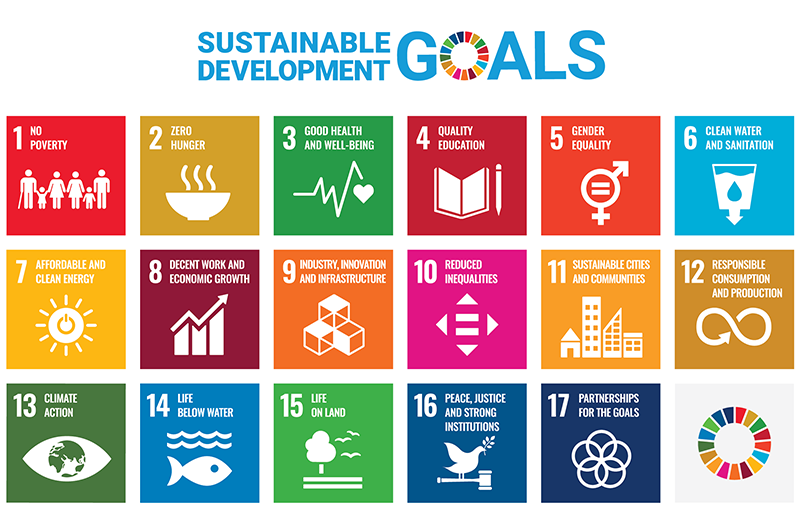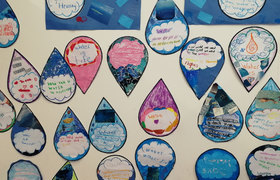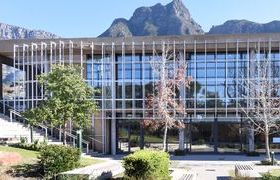SA unlikely to achieve UN’s SDG for water by 2030
24 March 2021 | Story Kevin Winter. Read time 10 min.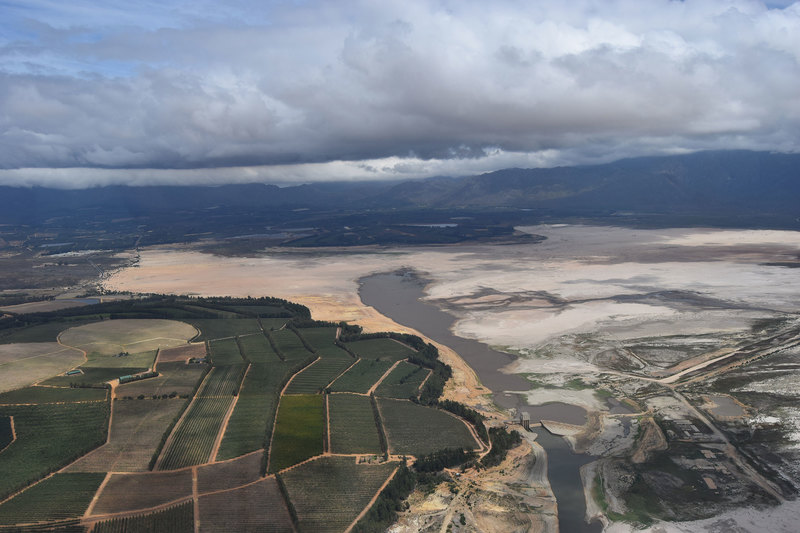
Dr Kevin Winter of the University of Cape Townʼs (UCT) Future Water Institute in the Department of Environmental and Geographical Science examines why South Africa is unlikely to achieve the United Nations (UN) Sustainable Development Goal (SDG) for water by 2030.
The SDGs are a global call to action to end poverty, protect the planet and ensure peace and prosperity by 2030. With fewer than nine years ahead, it is unlikely that South Africa will achieve the targets set for water.
The final report to the UN is more likely to take the form of a rain check, claiming that the pandemic has interrupted the agenda for addressing the SDGs. South Africa will not be the only country making such a plea. However, access to and availability of water is crucial for the country to press on with its developmental agenda by using the SDGs to complement the National Development Plan and to use the opportunity as an international benchmark.
In 2019 South Africa confirmed its commitment to meeting the SDGs in its first Voluntary National Review (VNR). The review highlights numerous policies and programmes and identifies copious developmental challenges, but progress toward achieving the water targets by 2030 is far too slow. The future development of South Africa depends on water.
SDG 6: Clean water and sanitation
South Africa is a signatory to the SDGs and, among other things, is committed to addressing the following eight targets for water and sanitation:
- Achieve universal and equitable access to safe and affordable drinking water for all.
- Achieve access to adequate and equitable sanitation and hygiene for all.
- Improve water quality by reducing pollution, eliminating dumping and minimising the release of hazardous chemicals and materials.
- Increase water-use efficiency across all sectors and ensure sustainable withdrawals.
- Implement integrated water resources management at all levels.
- Protect and restore water-related ecosystems.
- Expand international cooperation and capacity-building support to developing countries in water- and sanitation-related activities.
- Support and strengthen the participation of local communities in improving water and sanitation management.
Meeting these challenges was never going to be easy, but there are signs that South Africa will miss the targets by a long way. Here’s why:
Poor economic growth
The VNR claimed that economic growth was the strongest enabling factor that was necessary to achieve the SDGs. Target 8.1 states that 7% gross domestic product (GDP) growth per annum is necessary in the least developed countries. South Africa is a long way off from this figure – even if it is not classified as “the least developed”.
“There are signs of the collapse of water services in many municipalities countrywide.”
The annual rate of GDP was less than 2% in 2015 and declined to -8% in 2020. Poor GDP will impede investments in large-scale water infrastructure. There are signs of the collapse of water services in many municipalities countrywide, in declining infrastructure, non-payment for water services, mismanagement, corruption and bloated civil service wage bills that compromise the ability to operate and maintain water systems.
It is estimated that an investment of R899 billion is needed to build new water infrastructure required to meet the shortfall in supply and availability. The shortfall will have to be raised by increasing water and sanitation tariffs, but this will not be possible without economic growth.
Insufficient supply
South Africa is running out of water. The 2018 National Water and Sanitation Master Plan identified a water supply deficit of 17% by 2030. Access to improved water facilities in households declined from 87.5% in 2015 to 86.4% in 2017, and the national master plan acknowledged that only 64% of households had safe, reliable access to water. South Africa’s VNR proposed reducing water demand by 15% rather than dealing with the looming deficit.
What is required is a substantial investment in new water supply infrastructure; a concerted effort to reduce water loss – currently an average of 37%; and an investment in innovations that aim to reduce, recycle and reuse water without harming the receiving waters, including the oceans.
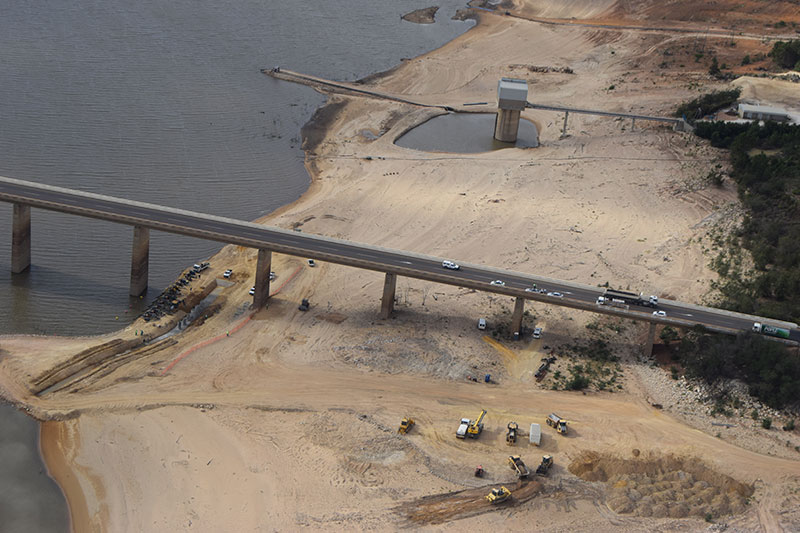
Poor monitoring and data
Statistics South Africa manages an online goal tracker data portal, which shows South Africa’s progress for all 17 SDG targets. The water sector appears to be doing better than most. In total, seven out of eight targets are “covered” within SDG 6, but the data is old and highly aggregated, making it difficult to understand, particularly when it is based on only one data point.
The goal tracker is a commendable project, but it comes across as a window-dressing exercise and fails to build public trust in informing the country’s collective progress towards meeting the SDG targets.
Increasing pollution
Water supply, access and availability have been a clarion call for decades, and rightly so, but more worrying is the national decline in water quality. Pollution is much harder to fix because it involves investment in technologies that are constantly changing, but it also involves an investment in human resources and, most of all, changing human behaviour.
The VNR acknowledges the deterioration of South Africa’s freshwater ecosystems and the impact on water supply. The collapse of freshwater ecosystems and ecosystem services is compromising the ability of wetlands and rivers to regulate hydraulic flows, avert flooding and purify water.
Approximately 40% of all water bodies in South Africa have poor water quality resulting from pollution and the destruction of river catchments (Department of Water and Sanitation, 2018).
Water stress
Overall, South Africa’s water stress level is 41%, with extremely high levels in parts of the Western Cape, Eastern Cape and North West. To make matters worse, the observed rate of warming of 2°C per century is even higher over these parts of South Africa.
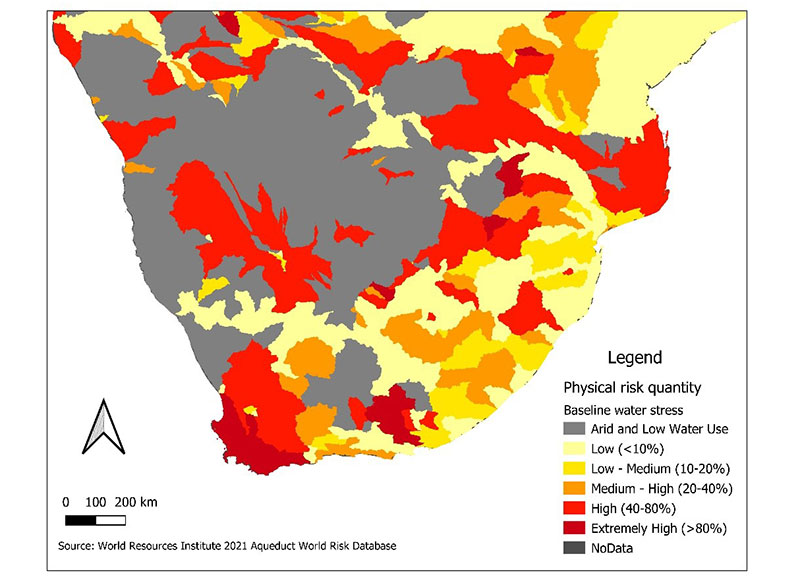
Water stress results in the deterioration of freshwater resources through rapid depletion of surface- and groundwater resources and a deterioration of water quality resulting from excess nutrient enrichment, salinity and accumulation of organic matter, among other things. The VNR admits that South Africa has “not made specific progress aimed at addressing water stress”.
Part of the reason is that water-balance information at a provincial and catchment level is not available. Since 2013, only two of the nine catchment management agencies (CMAs) made progress. CMAs play a critical role in making water management decisions, including responsible abstraction, allocation of water rights, water quality monitoring and stakeholder engagement within catchments.
Finding the bridge over troubled waters
Since 1994, South Africa has made substantial progress in the provision of safe drinking water and sanitation services, but it’s not enough. In addition, the pollution challenges are enormous. Only 58% of South Africa’s water bodies are compliant, while only 52% of wastewater is being safely treated and lawfully discharged.
Even at current levels of progress and institutional capacity, these challenges are unlikely to be addressed within the next nine years. South Africa needs to find a bridge over these troubling waters.
“South Africa needs to find this bridge to have any chance of meeting the SDG 6 targets.”
The VNR is unable to report on local administrative units that enable the participation of local communities in water and sanitation management. The national Integrated Development Plan and the Water Services Development Plan both support the participation of local communities in water and sanitation planning, yet it is odd that the VNR does not offer any account of this participation, especially in the case where local communities are most effective and carry the burden of failed or dysfunctional systems.
Moreover, SDG 6 makes no mention of partnerships and collaboration with the private sector. The Department of Water and Sanitation appears to want to fix the problem alone or at least to remain in full control. The potential for research, innovation and entrepreneurship to add value and support to the many water issues that confront the country is being ignored or is only making small gains.
In conclusion: If this is a bridge, then the water authorities will need to look outside of themselves. The formation of an independent water regulator (IWR) is still on mute. An IWR could play a significant role as a facilitator to ensure greater participation of local communities and in strengthening public-private partnerships.
South Africa needs to find this bridge to have any chance of meeting the SDG 6 targets.
 This work is licensed under a Creative Commons Attribution-NoDerivatives 4.0 International License.
This work is licensed under a Creative Commons Attribution-NoDerivatives 4.0 International License.
Please view the republishing articles page for more information.


